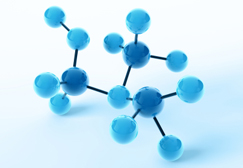Glutamine
Glutamine can be measured in the Industrial & Biotechnology applications.
Please see examples below.
Industry & Biotechnology
Glutamine is usually measured in the fermentation and culture control applications
Industry & Biotechnology
A simple and rapid enzymatic analysis for L-glutamine in a variety of biological fluids, e.g. for the monitoring and control of culture media and fermentation processes in biotechnology.
Principle
i) Ammonia, liberated from L-glutamine by the enzyme glutaminase (GLU), is converted to L-glutamate by a-ketoglutarate in the presence of glutamate dehydrogenase (GLDH) and excess NADH in a brief pre-reaction:


ii) Under the conditions of the assay, the rate of oxidation of excess NADH by peroxidase (POD) is inversely proportional to the total ammonia present:

A sample blank without GLU measures endogenous ammonia and other NADH consuming reactions and the L-glutamine concentration is obtained by difference.
Technical Summary
| Samples | Aqueous solutions (pH 5 - 7), culture fluid, etc |
| Sample Volume | 25 µl |
| Analytical Range | 0.5 - 20.0 mmol/L |
| Precision | Typical within-run C.V. = 1 - 2 % @ 8 mmol/L |
| Detection Limit | 0.2 mmol/L |
| Reagent Stability | Shelf-life 9 months unopened when stored at 0 - 5°C. Reconstituted GLDH/NADH/a-ketoglutarate, 7 - 10 days (2 vials) if stored at 0 - 5°C. |
| Analyser Sensitivity | 1 µmol/L (analyser) |
Notes:
Sample opacity or turbidity presents no problem since the sensor system is electrochemical rather than spectrophotometric.
Analysers
No analysers are currently available for this analyte.


